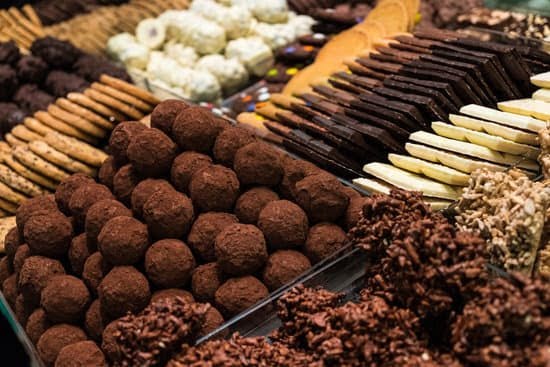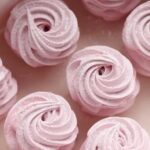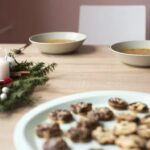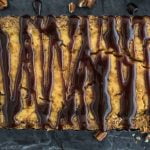Piping is an essential skill in the world of cake decorating, allowing bakers to create intricate and beautiful designs on their cakes. Whether it’s elegant borders, delicate flowers, or personalized messages, piping adds that special touch to any cake.
However, mastering the art of piping requires not only skill but also the use of the right cake decorating tips. In this article, we will explore the importance of piping in cake decorating and delve into the variety of tips available in the market to achieve perfect results.
Using the right cake decorating tips is crucial when it comes to piping. These specialized tools come in different shapes and sizes, each designed for different techniques and effects.
From simple round tips for basic designs to more complex petal or star-shaped tips for elaborate decorations, having a variety of tips at your disposal allows you to unleash your creativity and achieve professional-looking results. Choosing the right tip can make all the difference between a beautifully piped cake and a design that falls flat.
When it comes to cake decorating, having the right tools is just as important as having the right skills. Alongside an assortment of piping tips, other essential tools include piping bags and couplers. Piping bags come in various materials such as cloth or disposable plastic, each with its own advantages.
Couplers are handy devices that allow you to easily switch between different tips without having to empty and refill your bag for every design change. Additionally, accessories like connectors and brush sets can enhance your piping experience by providing precision control and allowing you to create even more intricate designs.
Types of Cake Decorating Tips
When it comes to cake decorating, having the right tools is essential for achieving beautiful and professional-looking results. One of the key tools that every cake decorator should have in their arsenal is a set of cake decorating tips.
These tips come in a variety of shapes and sizes, each designed for specific piping techniques and effects. Let’s explore some of the different types of cake decorating tips available in the market and how they can be used to enhance your piping skills.
- Round Tips: These tips are a must-have for basic piping techniques such as creating dots, outlines, and writing on cakes. They come in various sizes, with smaller sizes perfect for creating fine details and larger sizes suitable for filling in larger areas.
- Star Tips: Star tips are perfect for creating beautiful star-shaped designs, ruffles, shells, and borders. They feature various numbers of points or ridges, each producing unique effects. Experimenting with different star tip sizes can help you achieve different levels of detail.
- Rose Tips: If you want to create stunning floral arrangements on your cakes, rose tips are the way to go. These tips are shaped like a cone with a narrow opening on one end that allows you to pipe petals easily. With rose tips, you can create realistic roses and other delicate flowers.
Other types of cake decorating tips include leaf tips for creating leaves and leafy designs, petal or drop flower tips for making intricate flower petals, basketweave tips for weaving patterns that mimic baskets, and specialty tips designed specifically for writing or adding intricate details.
It’s important to note that while there are standard recommendations for which tip size to use based on specific designs or effects you want to achieve, don’t be afraid to experiment and mix different tips to create unique piping styles.
By understanding the various cake decorating tips available and how each one can be used, you’ll have more freedom and creativity in your cake decorating projects. So, take the time to explore different types of tips and practice with them to elevate your piping skills to the next level.
Essential Piping Tools
In order to achieve beautiful and professional-looking piping designs on cakes, it is important to have the right tools at your disposal. Here, we will introduce you to the necessary tools for piping and provide tips on how to enhance your piping experience.
One of the most essential tools for piping is the piping bag. Piping bags are available in a variety of materials such as nylon, cotton, and silicone. Nylon and cotton bags are affordable options and can be easily disposed of after use. Silicone bags, on the other hand, are reusable and more durable but tend to be more expensive. Consider your own preferences and budget when choosing a piping bag.
Couplers are another essential tool for piping. They allow you to easily switch between different decorating tips without having to change the entire bag of frosting. Couplers consist of a base that goes inside the bag, a ring that secures the tip in place, and a cap that holds everything together. Make sure to use couplers that are compatible with your chosen piping bags.
In addition to couplers and piping bags, there are other accessories that can enhance your piping experience. Piping nails are useful for creating flowers and other intricate designs by allowing you to pipe them separately before transferring them onto the cake. Flower formers can also be handy for giving shape to piped flowers while they dry.
It is important to have all these tools ready before starting any piping project. They will not only make the process easier but also contribute to achieving cleaner and more precise designs on your cakes. With the right tools in hand, you’re ready to explore various techniques and create stunning decorations through piping.
Preparing the Piping Bag
Piping bags are an essential tool for cake decorating, allowing decorators to create beautiful designs and intricate details on cakes. However, preparing a piping bag can be a daunting task for beginners. In this section, we will provide a step-by-step guide on how to prepare a piping bag for use, exploring different methods of filling the bag with frosting, and give tips to prevent leaks and mess while piping.
To prepare a piping bag, you’ll need a few simple tools: a piping bag, a coupler or tip adapter (if using), and the desired cake decorating tip. Start by selecting the appropriate size of piping bag for your project. Piping bags are typically made from either plastic or reusable cloth material. Plastic bags are disposable and convenient for quick projects, while cloth bags are more durable and eco-friendly.
Once you have your piping bag, attach the coupler or tip adapter if desired. A coupler allows you to easily change your decorating tips without needing to empty the entire bag of frosting. If you’re not using a coupler, simply insert the cake decorating tip into the bottom of the bag and trim any excess bag that extends beyond the base of the tip.
Next, fill your prepared piping bag with frosting. There are several methods you can use depending on personal preference – scooping frosting in with a spatula or spoon is common practice, as is using a large round pastry tip as a makeshift funnel. Whichever method you choose, be sure not to overfill the bag as this can cause excess pressure and lead to leaks.
To prevent leaks while piping, it’s important to properly seal your filled piping bag. Using one hand to gather all of the frosting at the bottom of the bag and twist it closed tightly will form a secure seal. You can also use rubber bands or twists ties if available to further secure the closure.
By following these steps and taking care during filling and sealing, you can ensure a successful piping experience with minimal mess. Practice this technique until you feel confident, and soon you’ll be ready to move on to exploring the various piping techniques in the next sections.
| Tools for Preparing the Piping Bag | Tips for Successful Preparation |
|---|---|
| Piping bag (plastic or reusable cloth) | Select the appropriate size of piping bag for your project. |
| Coupler or tip adapter (optional) | A coupler allows you to easily change decorating tips without emptying the bag. |
| Cake decorating tip | Choose the desired tip based on the design or effect you want to achieve. |
Basic Piping Techniques
When it comes to cake decorating, mastering basic piping techniques is essential. These techniques form the foundation for creating beautiful and professional-looking designs on your cakes. Whether you’re a beginner or an experienced decorator looking to brush up on your skills, understanding and practicing these techniques will take your cake creations to the next level.
Explanation of basic piping techniques such as the shell, star, and rosette
- The shell technique involves creating a continuous wave-like pattern using a shell-shaped tip. It is commonly used for borders and adding texture to cakes.
- The star technique allows you to create individual star shapes by applying consistent pressure while piping. This technique is perfect for adding decorative elements and filling large areas with frosting.
- The rosette technique creates beautiful flower-like swirls on cakes. By twisting your wrist while piping, you can achieve stunning rosettes that can be arranged in various patterns.
Tips on achieving consistent pressure and flow while piping
- Hold the piping bag firmly but not too tightly. Finding the right grip will allow you to have better control over the pressure applied to the frosting.
- Practice maintaining steady pressure by experimenting with different speeds and angles while piping. Consistency in pressure ensures uniformity in design.
- To achieve smooth lines and avoid uneven flow, try to keep the tip slightly above the surface of the cake as you pipe. This will help prevent any dragging or pulling of frosting.
Troubleshooting common problems and solutions
- If your frosting seems too stiff or difficult to pipe, try adding a small amount of liquid (such as milk or water) into the mixture until it reaches a more desirable consistency.
- If you’re experiencing air bubbles in your frosting that result in uneven flow, gently tap or shake the filled piping bag before starting to pipe. This will help release any trapped air and ensure a smoother flow.
- If your design starts to lose definition or looks messy, it could be due to inconsistent pressure or improper grip on the piping bag. Take breaks and practice maintaining consistent pressure to improve your piping skills.
By mastering these basic piping techniques and troubleshooting common problems, you will have a solid foundation for creating stunning cake designs. Remember, practice makes perfect, so don’t be discouraged if your first attempts aren’t as polished as you’d like. Keep experimenting and refining your skills, and soon enough, you’ll be creating beautiful cakes that will impress everyone around you.
Advanced Piping Techniques
In the world of cake decorating, there are always new and exciting techniques to explore and master. Advanced piping techniques allow decorators to take their creations to the next level, creating intricate designs and patterns that will leave a lasting impression. Whether you’re an experienced decorator looking for new challenges or a beginner ready to push yourself creatively, these advanced piping techniques are sure to inspire.
Introduce more complex piping techniques
Once you have mastered the basic piping techniques, it’s time to delve into more complex designs. Drop flowers are a popular advanced technique that adds dimension and elegance to any cake. By starting with a small dot in the center of your flower nail and piping petals around it, you can create realistic floral accents that will impress your guests.
Basketweave is another advanced technique that can add texture and depth to your cakes. By alternating vertical and horizontal lines with a flat or serrated tip, you can achieve a woven effect that mimics the look of a basket. This versatile technique can be used on its own or combined with other piping designs for stunning results.
Tips for creating intricate designs and patterns with piping
When attempting more complex piping techniques, it is essential to choose the right tip for the job. Larger tips are often used for covering large areas with icing quickly, while smaller tips are better suited for delicate details. Consider experimenting with different tip sizes and shapes to achieve the desired effect for your design.
Practicing consistency in pressure and flow is crucial when working on advanced piping techniques. Maintaining an even pressure allows for smoother lines and uniform shapes. It is also important to keep a steady hand while piping intricate designs as any sudden movements can affect the final result.
Practice exercises to improve piping skills
Improving your piping skills takes time and practice, but with dedication, you’ll see progress over time. One way to enhance your skills is by practicing on a silicone mat or parchment paper. This allows you to perfect your technique without the pressure of working directly on a cake.
Another effective practice exercise is creating a piping guide by drawing gridlines or outlines on a piece of parchment paper and placing it under a transparent sheet. This provides a visual reference for consistent spacing and design placement, allowing you to refine your technique. Remember, it’s always okay to make mistakes during practice sessions-don’t be discouraged, as they are opportunities for learning and growth.
By exploring advanced piping techniques, decorators can bring their cake designs to life with intricate patterns and designs. Remember that practice makes perfect, so take the time to master each technique before incorporating them into your cake decorating repertoire. With dedication and creativity, you’ll soon be impressing everyone with your stunning creations.
Piping Tips for Different Purposes
Piping tips are not one-size-fits-all when it comes to cake decorating. Different designs and effects require specific types of tips to achieve the desired result. In this section, we will explore piping tips that are specifically designed for different purposes, including writing and lettering, borders and outlines, as well as creating realistic floral and decorative elements on cakes.
When it comes to writing and lettering on cakes, using the right piping tip is crucial. The most commonly used tip for this purpose is the round tip. It creates a smooth, consistent line of frosting that is perfect for writing names, messages, or any other text on the cake. The size of the round tip can vary depending on the desired thickness of the letters or lines.
For piping borders and outlines, there are a few different options available. The star tip is great for creating detailed borders with a textured appearance. It gives a beautiful ridged effect that adds depth and dimension to the design. Alternatively, if you prefer a more simple and clean look, the plain round tip can be used to create smooth boundaries and outlines.
Creating realistic floral and decorative elements with piping requires specialized tips as well. Petal tips are commonly used for making flowers such as roses, daisies, or tulips. These tips have a curved shape that allows you to easily pipe petals with realistic definition and texture. Leaf tips are also useful for adding detailed leaves to your floral designs.
| Purpose | Recommended Piping Tips |
|---|---|
| Writing and Lettering | Round Tip |
| Borders and Outlines | Star Tip or Plain Round Tip |
| Realistic Floral and Decorative Elements | Petal Tip, Leaf Tip |
Using the right piping tip for each purpose will greatly enhance the overall appearance of your cake design. Experimenting with different tips and techniques can open up a world of possibilities and help you develop your own unique piping style.
Don’t be afraid to try new things and push the boundaries of your creativity. With practice and patience, you’ll soon master the art of piping and be able to create stunning cake designs that wow everyone who sees them.
Piping Inspiration and Ideas
When it comes to cake decorating, piping can truly elevate your designs and add a touch of creativity. It allows you to create intricate patterns, delicate details, and personalized messages on your cakes. The possibilities are endless with piping, whether you’re a beginner or an experienced decorator looking for new ideas.
Showcase Various Cake Designs
One of the best ways to get inspired is by looking at different cake designs that have been achieved through piping. From elegant wedding cakes to whimsical birthday cakes, there is no shortage of inspiration online. Websites like Pinterest and Instagram are great resources for finding stunning cake designs that you can try to recreate or put your own spin on.
Additionally, cake decorating books and magazines often feature beautiful piped designs that can spark your creativity. Take some time to browse through these resources and make note of any designs that catch your eye. As you practice your piping skills, you can gradually work towards recreating these designs or use them as inspiration for creating something entirely new.
Online Resources for More Ideas
If you’re looking for even more ideas and inspiration, many websites offer tutorials and step-by-step guides for various piping techniques. These resources often include detailed instructions on how to achieve specific designs or effects using different tips and frosting colors.
Some popular YouTube channels also provide valuable insights into the world of cake decorating and can offer countless ideas for piping techniques and designs. Watching professionals in action can help break down complex methods so that you can try them out at home.
Remember, while it’s important to draw inspiration from others’ creations, don’t be afraid to experiment and develop your own unique piping style. Practice different techniques and play around with color combinations to find what works best for you personally.
Conclusion
In conclusion, mastering the art of piping is an essential skill for anyone interested in cake decorating. Throughout this article, we have explored various aspects of piping, including the different types of cake decorating tips and essential tools needed for successful piping. We have also discussed basic and advanced piping techniques, as well as tips for specific purposes such as writing and lettering.
It is important to remember that using the right cake decorating tips is crucial in achieving perfect results when piping. Each tip has its own unique shape and size, which can greatly influence the design and effect created with frosting. By understanding which tips to use for specific designs and effects, decorators can achieve more precise and professional-looking cakes.
Lastly, I encourage all aspiring cake decorators to practice and experiment with different piping techniques. Piping is a skill that requires both knowledge and hands-on experience. By dedicating time to practice exercises and exploring various designs, decorators can significantly enhance their piping skills.
So go ahead, grab your piping bags, couplers, and connectors. Let your imagination flow as you experiment with different techniques and create your own unique designs. With determination and practice, you will become a master of the art of cake decorating through piping.
Frequently Asked Questions
How do you decorate a cake with piping tips?
Decorating a cake with piping tips involves using a pastry bag and various nozzle tips to create beautiful designs and patterns. First, prepare the icing by adding desired food coloring and achieving the desired consistency – it should not be too runny or too stiff. Fill the pastry bag with the icing, ensuring there are no air bubbles.
Hold the bag at a 45-degree angle above the cake and apply gentle pressure to release the icing while guiding the tip along the desired path. Practice different techniques such as rosettes, shells, or lines by applying varying amounts of pressure and changing nozzle tips for distinct shapes. With patience and practice, one can create intricate designs like flowers, borders, or personalized messages on their cakes using piping tips.
What are the best cake piping tips?
The best cake piping tips depend on the specific design and effect one wishes to achieve. There is a wide variety of piping tips available, each having its unique purpose. One popular choice is the round tip (also known as plain tip) which comes in different sizes and is versatile enough to create dots, lines, handwriting, or outlining details on cupcakes. For more complex creations like ruffles or decorative borders, petal tips are preferred due to their curved edges that produce realistic flower petals.
Open star tips are excellent for creating stars, flowers with open centers, and even swirls resembling soft serve ice cream. French tips work well for ribbon-like decorations or cornrow effects, whereas leaf tips allow for precise leaves on floral-themed designs. Ultimately, the best cake piping tip will vary based on personal preferences and specific design requirements.
What are the best piping tips for beginners?
When starting out with cake decorating using piping tips, it is important to choose ones that are user-friendly yet versatile enough to experiment with different techniques without overwhelming beginners. A couple of great options for beginners are round tips (sizes 1-3), which enable basic precision work such as writing or simple designs on cakes and cupcakes with more control over icing flow. Large open star tips (such as Wilton 1M) are also beginner-friendly as they allow for swirls on top of cupcakes or borders on cakes with quick and effortless results.
Additionally, closed star tips (like Wilton 2D) are relatively easy to work with and create beautiful rosettes or shells. These piping tips offer a good foundation to learn basic techniques while building confidence in cake decorating before exploring more intricate designs.

Welcome to our cake decorating blog! My name is Destiny Flores, and I am the proud owner of a cake decorating business named Cake Karma. Our mission is to provide delicious, beautiful cakes for all occasions. We specialize in creating custom cakes that are tailored specifically to each customer’s individual needs and tastes.





